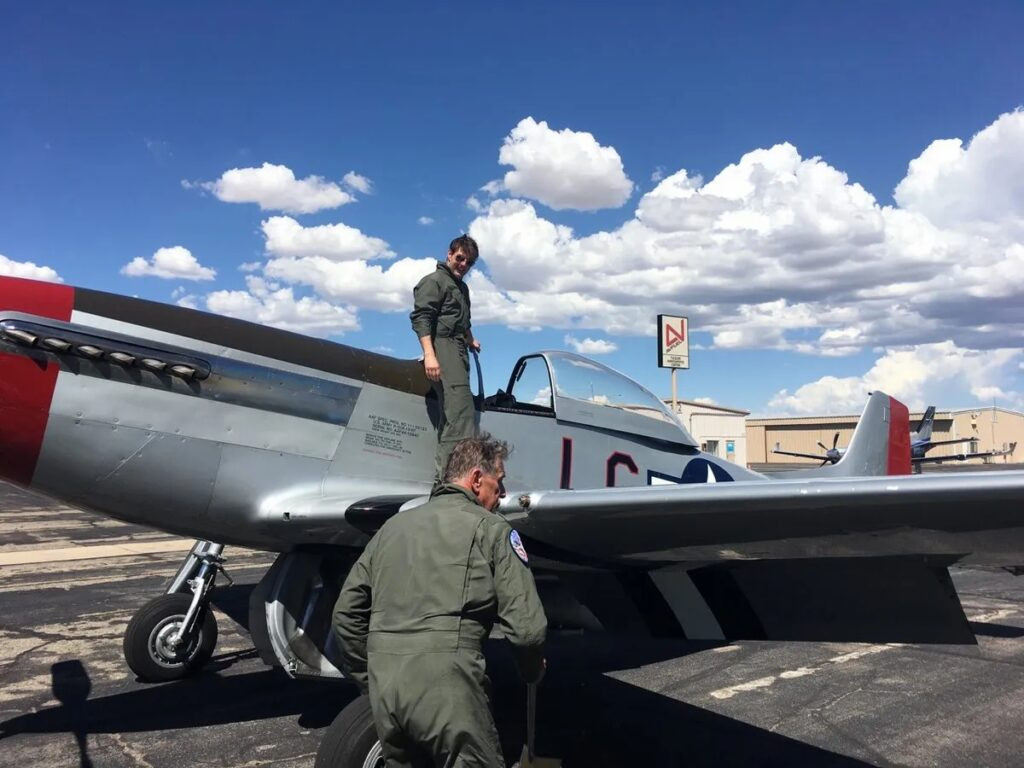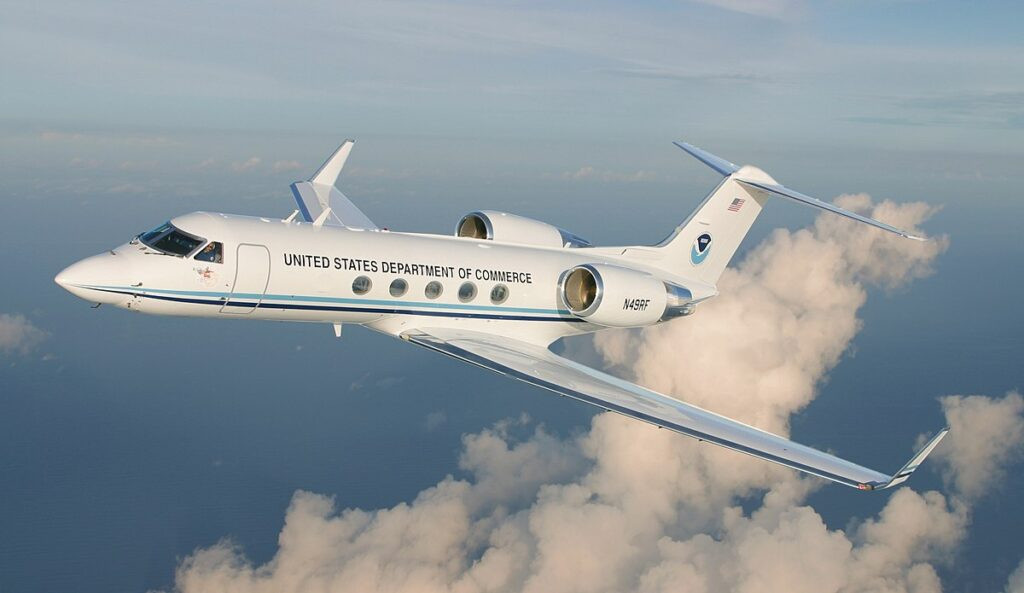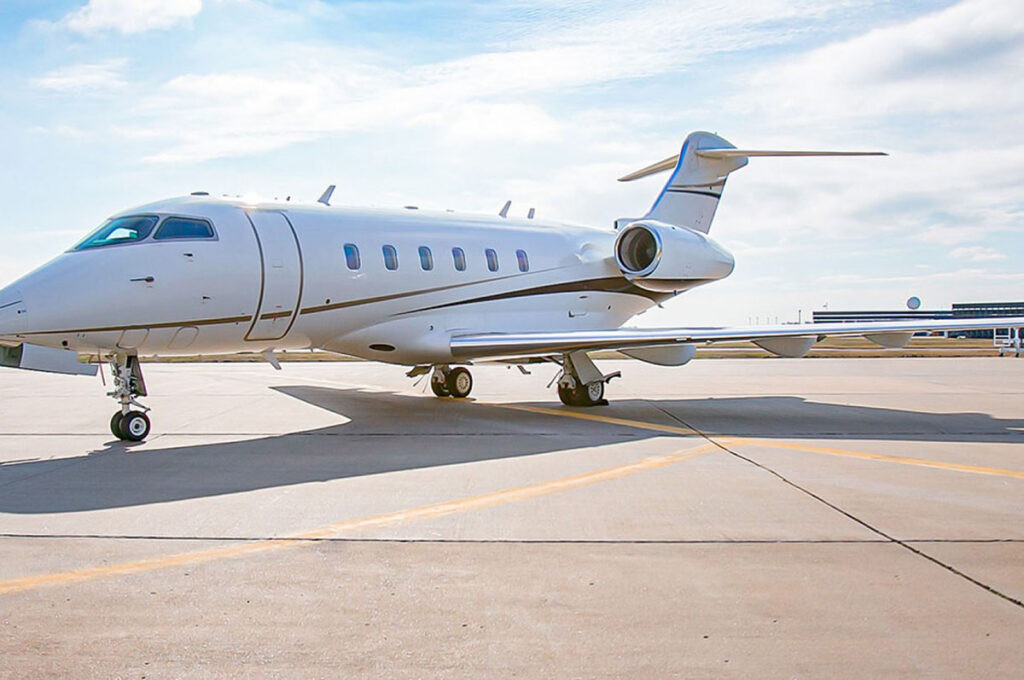Does Tom Cruise know how to fly a jet? Absolutely! Beyond being a charismatic actor known for performing his own stunts, Tom Cruise is a licensed pilot with a passion for aviation. Find out more about Tom Cruise’s pilot expertise and aviation exploits, as well as a fleet of luxury planes, with flyermedia.net. His commitment to aviation extends beyond Hollywood glitz, and you’ll also uncover exciting opportunities within the aviation sector, including piloting and aircraft maintenance, and get aviation news and tips.
1. What Aircraft Does Tom Cruise Own? A Look at His Luxurious Collection
Tom Cruise’s passion for flying is not just for show; he owns an impressive collection of aircraft. While the exact number remains a topic of speculation, four planes are confirmed or strongly believed to be part of his fleet, each reflecting his taste for luxury and performance. Let’s explore these airborne assets.
1.1. P-51 Mustang: A Warbird with a Hollywood Pedigree
 P-51 Mustang owned by Tom Cruise, gleaming in the sunlight
P-51 Mustang owned by Tom Cruise, gleaming in the sunlight
The P-51 Mustang, famously featured in Top Gun: Maverick, is more than just a movie prop; it’s a vintage warbird owned by Tom Cruise. This single-seat fighter aircraft, built in 1944 by North American Aviation, boasts a rich history, having served with the U.S. Army Air Force and Civil Air Patrol before finding its way into private hands. Cruise acquired this beauty in 2001 for an estimated $4 million, stationing it in California.
Initially adorned with “Montana Miss” and “Kiss Me, Kate” as a tribute to his then-wife, these affectionate inscriptions have since disappeared. Cruise has shared the thrill of flying in his P-51 with celebrities like Jennifer Connelly and James Corden, showcasing its allure and his passion for aviation.
1.2. Gulfstream IV G4: High-Flying Luxury and Comfort
 Interior of Tom Cruise's Gulfstream IV G4, showcasing its luxurious seating and amenities
Interior of Tom Cruise's Gulfstream IV G4, showcasing its luxurious seating and amenities
Estimated at a value of around $20 million, the Gulfstream IV G4 exemplifies luxury and performance. Produced from 1985 to 2015, this private jet is renowned for its lavish interior, featuring 19 plush seats, a private movie theater, and even a Jacuzzi bathtub. Its high-performance capabilities, powered by two Rolls-Royce Tay 611-8 turbofan engines, enable a range of 4,220 nautical miles and a maximum speed of Mach 0.88 (~675 mph), perfect for Cruise’s extensive travel needs.
1.3. HondaJet HA-420: A Light Jet with a Strong Following
 Sleek and modern HondaJet HA-420 soaring through the sky
Sleek and modern HondaJet HA-420 soaring through the sky
While not officially confirmed, strong evidence suggests that Cruise owns a HondaJet HA-420. This light jet, known for its distinctive over-the-wing engine mount configuration, can reach a maximum altitude of 43,000 feet and a speed of around 500 mph, covering a range of 1,200 nautical miles. The HA-420 features two engines and eight seats, making it an efficient and comfortable option for shorter trips.
1.4. Bombardier Challenger 300: A Transcontinental Traveler
 Elegant Bombardier Challenger 300 on the tarmac, ready for takeoff
Elegant Bombardier Challenger 300 on the tarmac, ready for takeoff
The Bombardier Challenger 300 is also believed to be part of Cruise’s collection. This plane can operate for approximately 3,220 miles at a maximum speed of 460 mph and an altitude of 45,000 feet. With dual engines and seating for 10, the Challenger 300 offers both performance and comfort for long-distance travel.
2. Is Tom Cruise a Licensed Pilot? Unveiling His Aviation Skills
So, does Tom Cruise know how to fly a jet? The answer is a resounding YES. His passion for aviation led him to obtain his pilot’s license in 1994, demonstrating his dedication to mastering the skills required to fly various aircraft. Cruise’s commitment to aviation extends beyond mere ownership; he actively participates in flying, showcasing his expertise both on and off the screen.
2.1. Tom Cruise’s Pilot License: A Testament to His Dedication
Obtaining a pilot’s license is no easy feat; it requires rigorous training, knowledge of aviation regulations, and practical flying experience. Cruise’s decision to pursue this certification highlights his genuine interest in aviation and his willingness to invest the time and effort necessary to become a skilled pilot.
2.2. Flying On-Screen and Off-Screen: Blurring the Lines
Cruise’s piloting skills aren’t just for personal enjoyment; he often incorporates them into his film roles. Top Gun: Maverick is a prime example, where he not only acted but also piloted aircraft in many of the film’s breathtaking aerial sequences. This dedication to authenticity elevates his performances and underscores his passion for aviation.
3. Exploring Aviation Careers: Inspired by Tom Cruise’s Passion
Tom Cruise’s aviation endeavors can inspire others to explore careers in the aviation industry. Whether you dream of becoming a pilot, an aircraft mechanic, or an air traffic controller, the possibilities are vast and rewarding.
3.1. Becoming a Pilot: A Journey of Skill and Dedication
Aspiring pilots can choose from various paths, including flight schools, university aviation programs, and military training. Each route offers unique advantages and prepares individuals for different types of flying careers, from commercial aviation to private piloting.
3.1.1. Flight Schools: A Focused Approach
Flight schools provide a structured and intensive training environment, focusing specifically on the skills and knowledge required to become a certified pilot. These schools offer a range of programs, from private pilot licenses to commercial pilot certifications, catering to different career goals.
For example, Embry-Riddle Aeronautical University in Daytona Beach, FL, offers a comprehensive flight training program that combines academic coursework with hands-on flying experience. Their program is designed to prepare students for careers in commercial aviation, corporate aviation, and other related fields. Address: 600 S Clyde Morris Blvd, Daytona Beach, FL 32114, United States. Phone: +1 (386) 226-6000. Website: flyermedia.net.
3.1.2. University Aviation Programs: A Broader Education
University aviation programs offer a more comprehensive educational experience, combining flight training with academic studies in areas such as aviation management, aerospace engineering, and air traffic control. These programs provide a broader understanding of the aviation industry and prepare graduates for a wider range of career opportunities.
According to research from Embry-Riddle Aeronautical University, in July 2025, aviation programs provide Y.
3.1.3. Military Training: A Disciplined Path
Military service offers a rigorous and disciplined path to becoming a pilot. Military pilots receive extensive training in advanced aircraft and participate in challenging operational missions. After their military service, many pilots transition to civilian aviation careers, bringing their skills and experience to commercial airlines and other aviation organizations.
3.2. Aircraft Maintenance: Ensuring Safety and Reliability
Aircraft mechanics play a crucial role in ensuring the safety and reliability of aircraft. They inspect, maintain, and repair aircraft systems, ensuring that they meet strict regulatory standards. Aircraft mechanics require specialized training and certification, and they work in a variety of settings, including airlines, maintenance repair organizations (MROs), and general aviation facilities.
3.3. Air Traffic Control: Guiding Flights Safely
Air traffic controllers are responsible for guiding aircraft safely through the airspace system. They use radar and communication systems to monitor aircraft movements, provide instructions to pilots, and prevent collisions. Air traffic control is a high-pressure job that requires quick thinking, excellent communication skills, and a thorough understanding of aviation regulations.
4. Staying Up-to-Date with Aviation News: Flyermedia.net as Your Resource
The aviation industry is constantly evolving, with new technologies, regulations, and trends emerging regularly. Staying informed about these developments is crucial for anyone involved in aviation, whether you’re a pilot, a mechanic, or simply an aviation enthusiast. Flyermedia.net serves as a valuable resource for staying up-to-date with the latest aviation news and information.
4.1. Flyermedia.net: Your One-Stop Aviation Hub
Flyermedia.net offers a comprehensive range of aviation-related content, including news articles, feature stories, expert opinions, and industry analysis. Whether you’re interested in the latest aircraft technologies, regulatory changes, or career opportunities, you’ll find it on Flyermedia.net.
4.1.1. In-Depth Articles and Analysis
Flyermedia.net provides in-depth articles and analysis on a wide range of aviation topics. Their team of experienced aviation journalists and industry experts provide insightful commentary and analysis on the latest trends and developments.
4.1.2. Expert Opinions and Insights
Flyermedia.net features expert opinions and insights from leading aviation professionals. These articles provide valuable perspectives on the challenges and opportunities facing the aviation industry.
4.1.3. Career Resources and Opportunities
Flyermedia.net offers a variety of career resources and opportunities for aspiring aviation professionals. Their job board features listings from leading aviation companies, and their career guides provide valuable advice on how to break into the industry.
4.2. Following Key Aviation News Sources
In addition to Flyermedia.net, several other reputable news sources provide valuable aviation information. These include:
- Aviation Week & Space Technology: A leading industry publication covering all aspects of aviation and aerospace.
- FlightGlobal: A comprehensive news and information source for the global aviation industry.
- AINonline: A leading provider of business aviation news and information.
- General Aviation News: A news source focused on general aviation and recreational flying.
5. Navigating Air Travel: Tips and Resources for Passengers
For those who travel by air, understanding the basics of air travel can enhance your experience and make your journey smoother. Flyermedia.net provides helpful tips and resources for passengers, covering topics such as:
5.1. Choosing the Right Airline and Flight
Selecting the right airline and flight can significantly impact your travel experience. Consider factors such as price, schedule, comfort, and amenities when making your decision.
5.1.1. Comparing Airlines and Fares
Use online travel agencies and airline websites to compare prices and schedules for different airlines and flights. Consider factors such as baggage fees, seat selection fees, and cancellation policies when comparing fares.
5.1.2. Reading Airline Reviews
Read online reviews to get insights into the customer service, on-time performance, and overall experience of different airlines.
5.2. Airport Navigation and Security
Navigating airports can be stressful, especially during peak travel times. Familiarize yourself with the airport layout, security procedures, and transportation options to make your journey smoother.
5.2.1. Arriving Early
Arrive at the airport well in advance of your scheduled departure time to allow ample time for check-in, security screening, and navigating to your gate.
5.2.2. Understanding Security Procedures
Familiarize yourself with TSA security procedures and regulations to avoid delays and ensure a smooth screening process.
5.3. In-Flight Comfort and Entertainment
Make your in-flight experience more comfortable by bringing your own entertainment, snacks, and personal items. Consider purchasing a comfortable neck pillow, noise-canceling headphones, and an eye mask to help you relax during the flight.
6. Understanding Aviation Regulations: Ensuring Safety and Compliance
Aviation is a heavily regulated industry, with strict rules and standards governing all aspects of flight operations, aircraft maintenance, and air traffic control. Understanding these regulations is crucial for anyone involved in aviation, whether you’re a pilot, a mechanic, or an air traffic controller.
6.1. Key Regulatory Agencies
Several regulatory agencies oversee the aviation industry, including:
- Federal Aviation Administration (FAA): The FAA is the primary regulatory agency for civil aviation in the United States. It is responsible for setting safety standards, certifying pilots and mechanics, and managing the national airspace system.
- International Civil Aviation Organization (ICAO): ICAO is a United Nations agency that sets standards and regulations for international aviation.
- European Aviation Safety Agency (EASA): EASA is the regulatory agency for civil aviation in the European Union.
6.2. Key Aviation Regulations
Some of the key aviation regulations include:
- Federal Aviation Regulations (FARs): The FARs are a set of regulations issued by the FAA that govern all aspects of civil aviation in the United States.
- Airworthiness Directives (ADs): ADs are issued by the FAA to address safety issues with aircraft and require specific maintenance or modifications to be performed.
- Notices to Airmen (NOTAMs): NOTAMs are issued by the FAA to provide pilots with timely information about potential hazards or changes to the airspace system.
7. Top Gun and Aviation Culture: Inspiring a New Generation
Top Gun has had a significant impact on aviation culture, inspiring generations to pursue careers in aviation and fostering a love for flight. The film’s realistic portrayal of naval aviation and its emphasis on skill, courage, and teamwork have resonated with audiences worldwide.
7.1. The Impact of Top Gun on Aviation Enrollment
The release of Top Gun in 1986 led to a surge in applications to naval aviation programs. Many young people were inspired by the film’s portrayal of fighter pilots and the excitement of flying high-performance aircraft. Similarly, Top Gun: Maverick has renewed interest in aviation careers, with flight schools and universities reporting an increase in inquiries and applications.
7.2. Celebrating Aviation History and Innovation
Top Gun celebrates the history and innovation of aviation, showcasing the evolution of aircraft technology and the skills of the pilots who fly them. The film also highlights the importance of teamwork and leadership in aviation, emphasizing the need for collaboration and communication to ensure safety and success.
8. Answering Your FAQs About Tom Cruise and Aviation
Here are some frequently asked questions about Tom Cruise and his involvement in aviation:
8.1. What Jets Were Used In Top Gun 1986?
The F-14A Tomcat took the spotlight in the original Top Gun. In addition, there were a few other aircraft, such as the Northrop F-5, Douglas A-4 Skyhawk, and Grumman KA-6D.
8.2. Can Tom Cruise Fly An F-18?
Unfortunately, no. Even though Tom Cruise performed many of the action scenes himself in Top Gun 2, he is not qualified to pilot a military aircraft, according to the U.S. Navy.
8.3. Was The F-22 Used In Maverick Top Gun?
The F-22 Raptor did not appear in Top Gun despite audience expectations. The filmmakers omitted this famous military aircraft as it did not fit the movie context set in the Navy. Additionally, its limited interior space prevents filming spectacular footage from inside the cockpit.
8.4. Why Didn’t They Fly The F-35 In Top Gun?
Similar to the F-22, filmmakers found it impossible to shoot from inside the F-35’s cockpit because of its single-seat design.
8.5. What is Tom Cruise’s Net Worth?
As of 2024, Tom Cruise’s net worth is estimated to be around $600 million. This wealth stems from his successful acting career, producing ventures, and strategic investments.
8.6. Where Does Tom Cruise Live?
Tom Cruise owns multiple properties around the world, including residences in Beverly Hills, California, and Clearwater, Florida. He often travels for film projects and personal interests.
8.7. How Many Stunt Doubles Does Tom Cruise Have?
While Tom Cruise is known for performing many of his own stunts, he does use stunt doubles for particularly dangerous or complex sequences. The number of stunt doubles he employs varies depending on the film and the specific stunts involved.
8.8. What Kind of Car Does Tom Cruise Drive?
Tom Cruise has an eclectic taste in cars, owning a diverse collection that includes high-performance sports cars, classic automobiles, and luxury vehicles. Specific models include a Porsche 911, a Bugatti Veyron, and a Chevrolet Corvette.
8.9. How Tall is Tom Cruise?
Tom Cruise’s height is officially listed as 5 feet 7 inches (170 cm).
8.10. What Are Tom Cruise’s Upcoming Movies?
As of 2024, Tom Cruise is scheduled to appear in several upcoming films, including Mission: Impossible 8 and a yet-untitled space-based action-adventure movie.
9. Conclusion: Tom Cruise, Aviation Enthusiast and Skilled Pilot
Does Tom Cruise own a fighter jet? Without a doubt, YES. Whether discussing his impressive aircraft collection, his pilot’s license, or his contributions to aviation culture, it’s clear that Tom Cruise is a genuine aviation enthusiast. He’s not just an actor playing a role; he’s a skilled pilot with a deep passion for flying.
Ready to take your own aviation journey? Visit flyermedia.net today to explore flight schools, read the latest aviation news, and discover exciting career opportunities in the world of flight. Your aviation adventure starts here!
